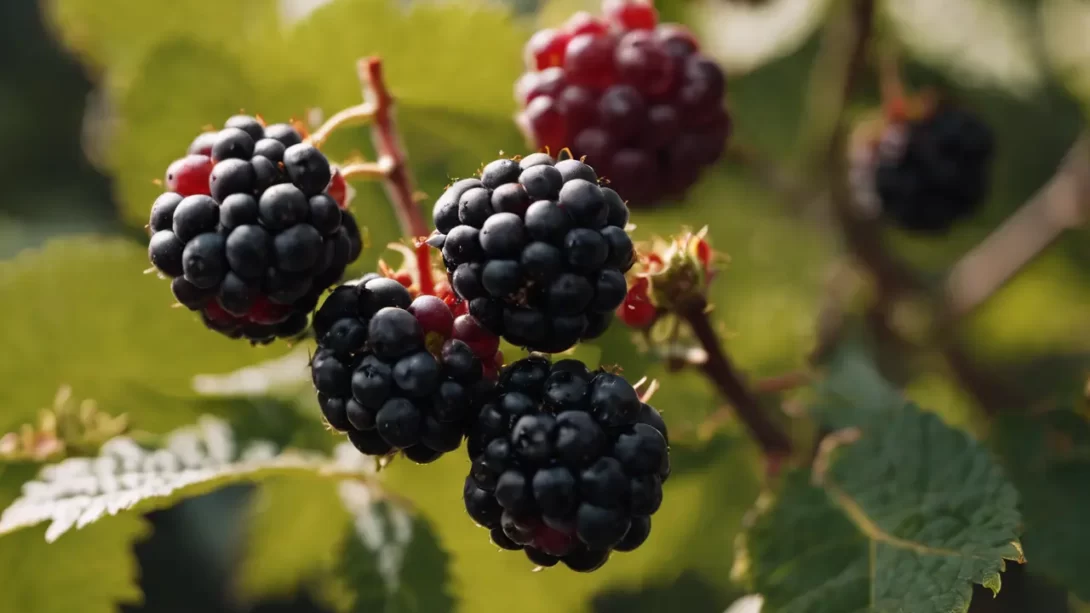Blackberries are a beloved fruit enjoyed in various cuisines worldwide, valued for their sweet-tart flavor and nutritional benefits. A common question among enthusiasts and culinary experts alike is: Do blackberries have seeds? This article aims to delve into the anatomy of blackberries, examining their seed content and how it affects their use in different culinary applications.
Blackberries
Blackberries belong to the Rubus genus and are known for their distinctive dark color and complex structure. Unlike fruits with a single pit or core, blackberries are aggregate fruits, composed of multiple small segments called drupelets. Each of these drupelets contains its own seed, contributing to the overall texture and experience of eating the fruit. Blackberries are typically harvested in late spring through summer, depending on the local climate, and are enjoyed fresh, cooked, or preserved.
Anatomy of a Blackberry
The anatomy of a blackberry is unique and contributes to its characteristic texture and taste. Inside each tiny drupelet of a blackberry is a small seed. These seeds are numerous but relatively small, often unnoticed when enjoying the fruit. The seeds are an integral part of the blackberry’s structure, giving it a slightly grainy texture. Understanding this structure is key to appreciating blackberries’ culinary uses and potential health benefits.
Nutritional Profile of Blackberry Seeds
The seeds in blackberries are more than just a textural element; they are packed with nutrients. These tiny seeds are a good source of dietary fiber, essential for digestive health. They also contain important vitamins, such as Vitamin C and Vitamin K, and are rich in antioxidants, which are compounds known for combating free radicals in the body. Moreover, blackberry seeds are a source of omega-3 and omega-6 fatty acids, beneficial for heart health. The inclusion of these seeds in the diet can contribute to overall nutrition, making blackberries a healthy choice for a snack or ingredient.
Culinary Uses and Considerations
In culinary terms, blackberries are versatile fruits, used in a wide array of dishes. From fresh salads to baked goods like pies and cobblers, blackberries add flavor, color, and texture. The presence of seeds in blackberries is generally well-tolerated in most recipes. However, some people might prefer to avoid the seeds, either for textural reasons or due to dental concerns.
For those preferring a smoother texture, there are methods to reduce the impact of seeds. Blackberries can be pureed and strained to remove seeds for use in sauces, jams, and desserts. This process retains the fruit’s flavor and color while providing a more refined texture. It’s important to note that while straining removes seeds, it can also reduce the fiber content.
Seedless Blackberries: Fact or Fiction?
The concept of seedless blackberries is intriguing to many. While fully seedless blackberries are not commonly available, there have been horticultural efforts to breed varieties with smaller, less noticeable seeds. These varieties aim to combine the desirable qualities of blackberries — flavor, nutrition, and color — with a more palatable texture for those sensitive to seeds.
The development of lower-seed or seedless blackberries involves selective breeding and sometimes genetic modifications. The taste and texture of these modified varieties can vary slightly from traditional blackberries. They are often designed to cater to specific preferences or culinary needs, such as use in smoothies or commercial food production.
Conclusion
In summary, blackberries indeed contain seeds, each nestled within the small drupelets that make up the fruit’s aggregate structure. These seeds, while sometimes overlooked, contribute significantly to the nutritional value of blackberries, offering fiber, vitamins, antioxidants, and essential fatty acids. This nutritional profile makes blackberries, along with their seeds, a healthy addition to any diet.
From a culinary standpoint, blackberries are highly versatile, capable of enhancing a variety of dishes with their rich flavor and vibrant color. While the seeds are generally not problematic in most culinary applications, options exist for those who prefer a smoother texture, such as straining the fruit to remove seeds for certain recipes.
The pursuit of seedless or lower-seed blackberry varieties illustrates the ongoing efforts to cater to diverse consumer preferences. These varieties aim to maintain the fruit’s desirable attributes while minimizing the textural presence of seeds. However, it’s important to remember that traditional blackberries, seeds and all, remain a popular and healthful choice.
Understanding the role and benefits of seeds in blackberries allows for a deeper appreciation of this fruit in both nutritional and culinary contexts. Whether enjoying blackberries in their natural seeded form or opting for seedless varieties, this fruit continues to be a delightful and nutritious option for a wide range of palates and purposes. Encouraging a broadened perspective on blackberries and their seeds can enhance both our dietary choices and culinary experiences.



